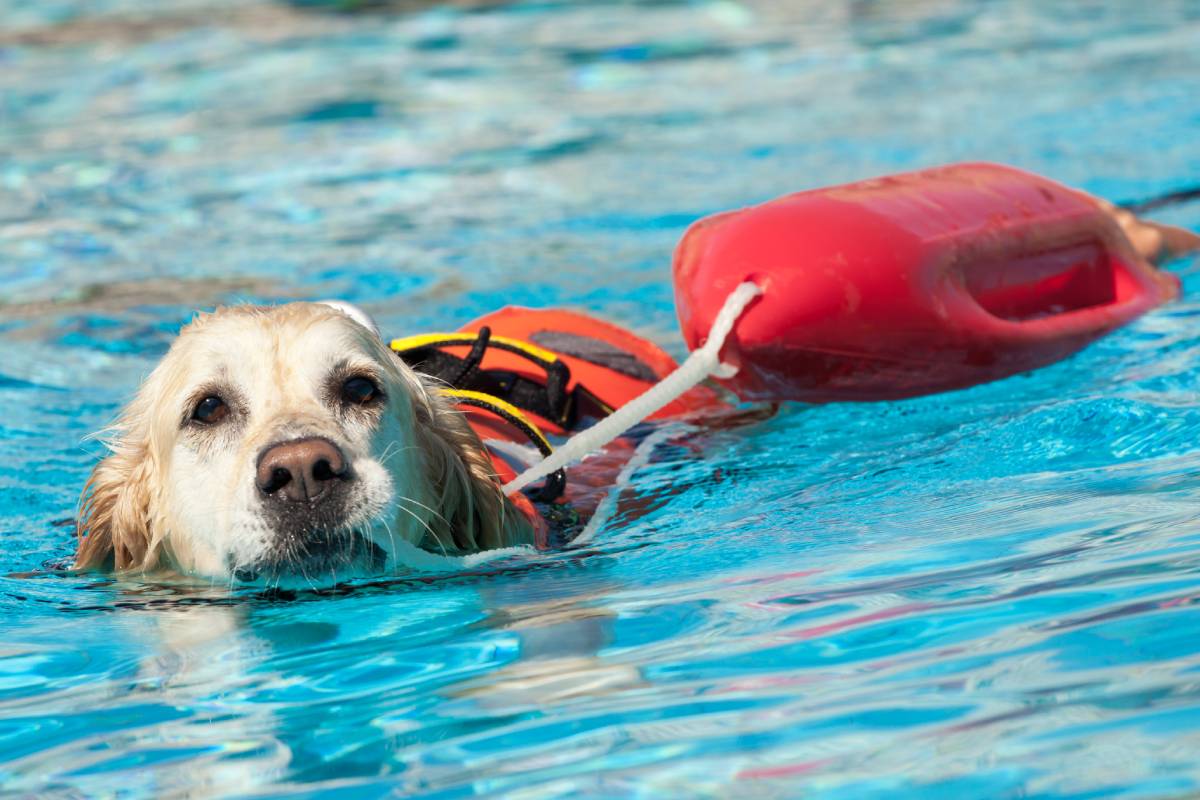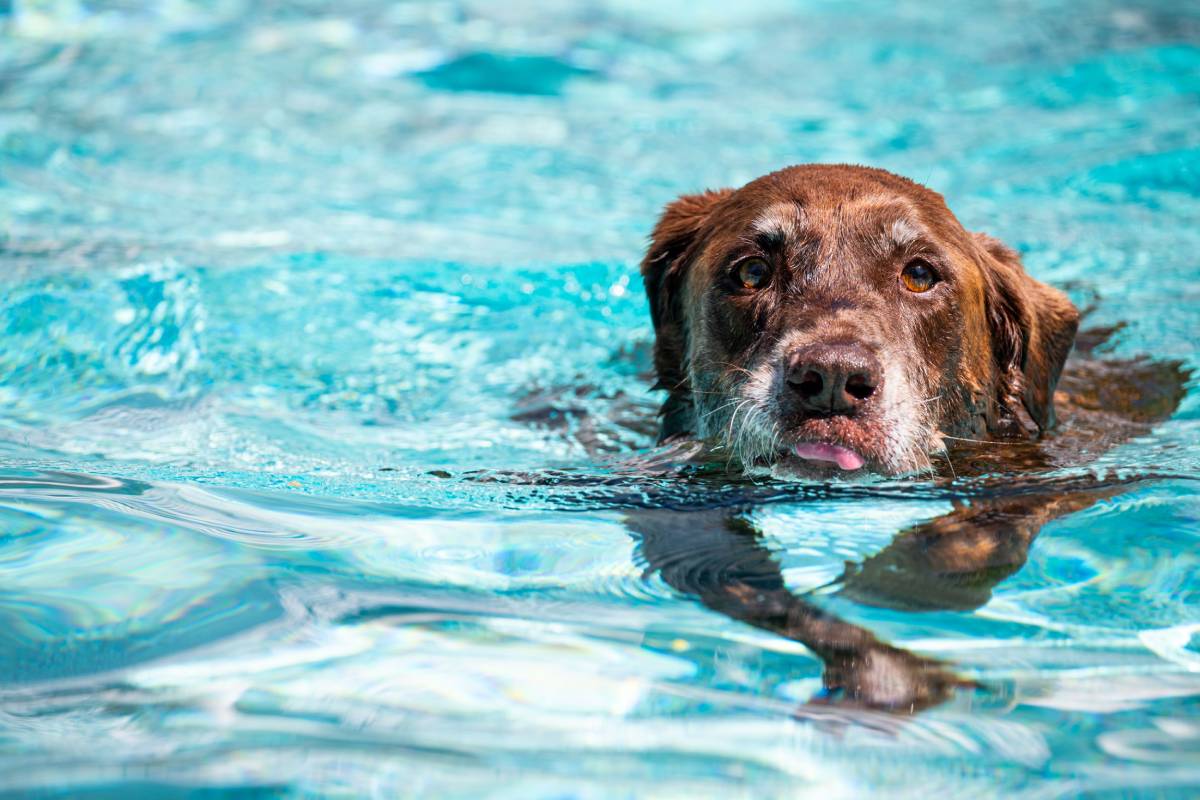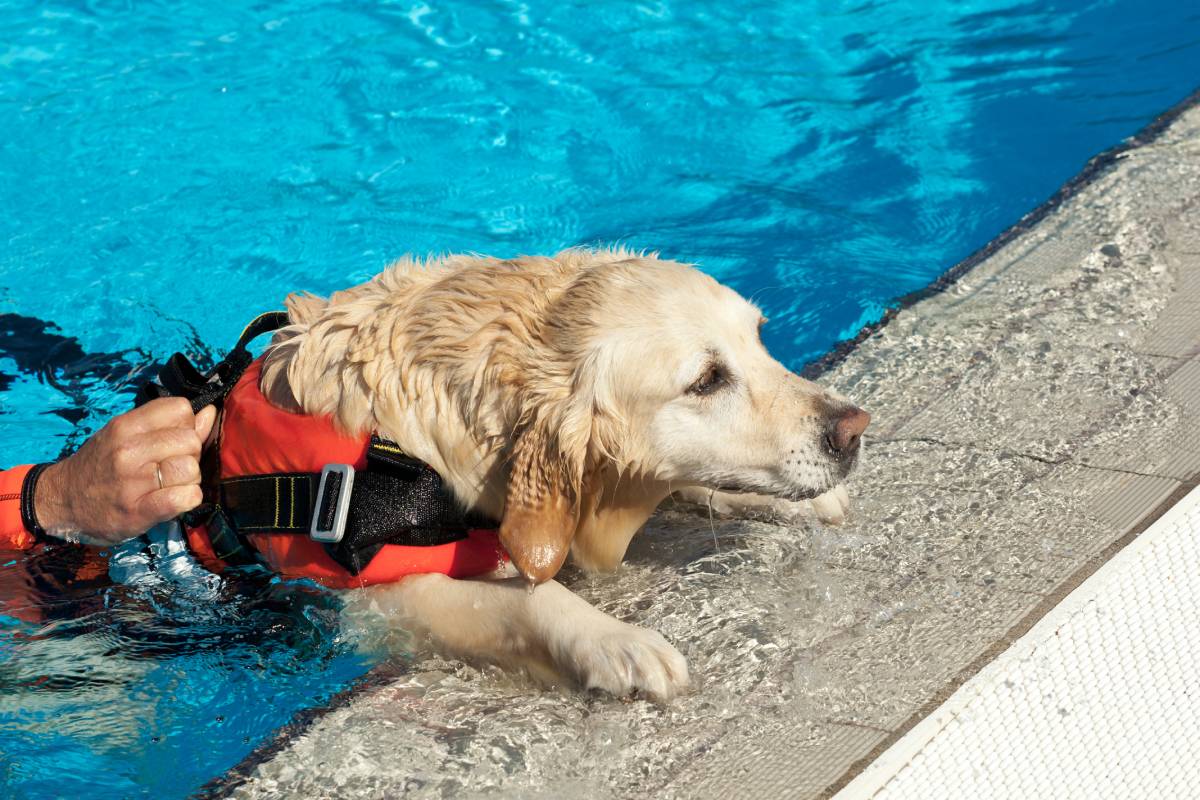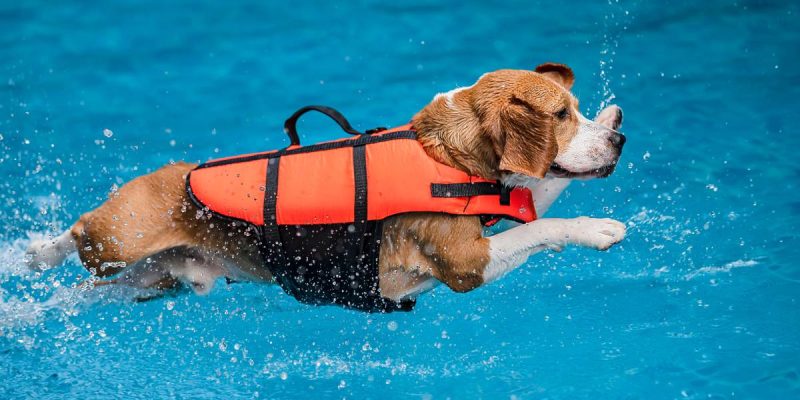Swimming isn’t just a refreshing summer pastime for humans it can also be a fun, healthy, and engaging activity for dogs. Whether it’s for exercise, cooling off, or simply playing in the water, swimming offers a range of benefits for our four-legged friends.
But before you grab a towel and let your pup dive in, it’s essential to consider their comfort, safety, and readiness for the water. Introducing a dog to a swimming pool requires patience, preparation, and understanding not all dogs are natural swimmers, and some may be sensitive to pool chemicals like chlorine.
In this guide, we’ll explore how to safely and positively introduce your dog to the pool, discuss whether swimming is right for your pet, and explain how to manage common concerns such as skin irritation from chlorine. Let’s help your dog make a splash in the safest and happiest way possible.
Should I Put My Dog in the Pool?

Before introducing your dog to a swimming pool, it’s important to assess whether swimming is right for your pet. Not all dogs are natural swimmers, and certain breeds may have physical limitations or anxieties that make swimming uncomfortable or unsafe.
Brachycephalic breeds often have difficulty swimming due to their short snouts and body shape. Older dogs, or those with joint issues or health concerns, may also find swimming challenging.
However, many dogs enjoy swimming and benefit from it immensely. Swimming can improve cardiovascular health, build muscle, and provide low-impact exercise that is gentle on joints. If your dog is healthy, curious, and comfortable around water, the pool can be a great playground. The key is to introduce it the right way.
Step-by-Step Guide to Introducing Your Dog to the Pool
1. Start Slow
Don’t rush the process. Begin by letting your dog explore the pool area while it’s empty or when you’re just dipping your feet in. Allow them to sniff around and get used to the sounds and smells.
2. Use Positive Reinforcement
Reward your dog with treats, praise, or their favorite toy every time they show curiosity about the water. This will build positive associations with the pool.
3. Introduce Water Gradually
If your pool has steps or a shallow ledge, encourage your dog to stand or walk in the shallow area first. You can get in the water yourself to show them it’s safe. Never force your dog into the water.
4. Consider a Canine Life Jacket
Especially for first-time swimmers or less confident dogs, a dog-specific life jacket provides safety and helps them float while they get accustomed to swimming.

5. Practice Short Swimming Sessions
Keep the first few swims short and supervised. Help your dog find the exit point so they know how to get out easily.
6. Stay Calm and Supportive
Your dog will take cues from your behavior. Stay calm, positive, and supportive. If your dog seems scared or overwhelmed, stop and try again another day.
7. Rinse After Swimming
Chlorine and other pool chemicals can irritate a dog’s skin or eyes. Rinse your dog with clean, fresh water after swimming to remove chemical residues.
Is Chlorine Bad for Dogs’ Skin?
Chlorinated water, in moderate amounts, is generally safe for dogs. However, prolonged or frequent exposure can lead to dryness, irritation, and allergic reactions in some dogs. Here’s what to keep in mind:
Skin and Coat Health
Chlorine can strip natural oils from your dog’s coat, leading to dry, itchy skin. Dogs with sensitive skin or existing skin conditions may be more susceptible to irritation. After swimming, rinse your dog off with fresh water to remove chlorine and help restore moisture to their coat. Regular use of a moisturizing dog shampoo can also help maintain skin and coat health.
Eye and Ear Sensitivity
Dogs may develop red or watery eyes after swimming in chlorinated water. Make sure to rinse their face gently with fresh water. Always dry your dog’s ears thoroughly to prevent infections, especially if they are prone to ear issues. You can also use an ear cleaner recommended by your vet to keep their ears dry and free from bacteria.
Ingestion Risk
A small amount of swallowed pool water usually isn’t harmful, but large amounts of chlorinated water can upset your dog’s stomach. Discourage your dog from drinking pool water by providing fresh water nearby. If you notice signs of stomach upset, such as vomiting or lethargy, consult your vet for advice and possible treatment.

Alternatives and Precautions
If you’re concerned about chlorine, consider using a saltwater pool system, which may be gentler on skin and eyes. Regularly check and maintain proper chemical levels in your pool to ensure it’s safe for both humans and pets. Additionally, consider setting up a designated pet-friendly pool area with easy exits to prevent your dog from overexerting themselves in the water.
Tips for Safe and Fun Dog Swimming
- Supervise Always: Never leave your dog unattended in the pool, especially if they are new to swimming.
- Teach Exit Points: Practice getting in and out of the pool at specific places, like steps or a ramp.
- Use Pool Ramps: Special pet ramps can make it easier and safer for your dog to exit the pool.
- Limit Time: Avoid overly long swims, especially in hot weather, to prevent fatigue or heatstroke.
- Use Sun Protection: Light-colored or thin-coated dogs can get sunburned. Use pet-safe sunscreen if needed.
- Watch for Signs of Fatigue: Panting, slow swimming, or trying to climb on you may indicate your dog needs a break.
Psychology of Animal Lovers and Their Dogs in the Pool
Animal lovers often view their dogs as family, influencing how they introduce new experiences like swimming. While swimming can strengthen the bond, it’s important to consider the dog’s emotional and physical needs.
Gradually introducing the pool with positive reinforcement ensures a positive experience. The Psychology of Animal Lovers emphasizes the emotional connection between owners and pets, making patience and support key.
Watching their dogs enjoy the water brings joy to owners, but it’s important to be mindful of each dog’s personality to ensure a safe and enjoyable experience.
Final Thoughts
Introducing your dog to a swimming pool can be a rewarding and healthy experience, as long as it’s done gradually and thoughtfully.
Respect your dog’s pace, observe how they respond to the water, and make safety your top priority. While chlorine isn’t inherently dangerous in small doses, always rinse your dog off after swimming and monitor their skin and eyes for any signs of irritation.
Ultimately, the goal is to create a fun, safe, and stress-free environment where your dog can enjoy the water, exercise, and bond with you. With the right approach, you can make pool time a favorite part of their routine.




















